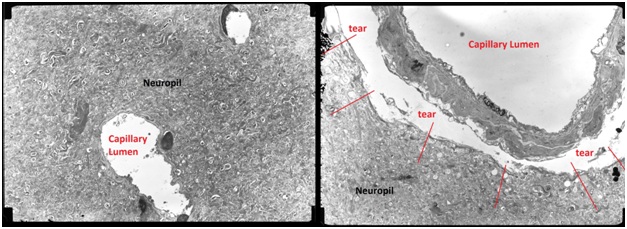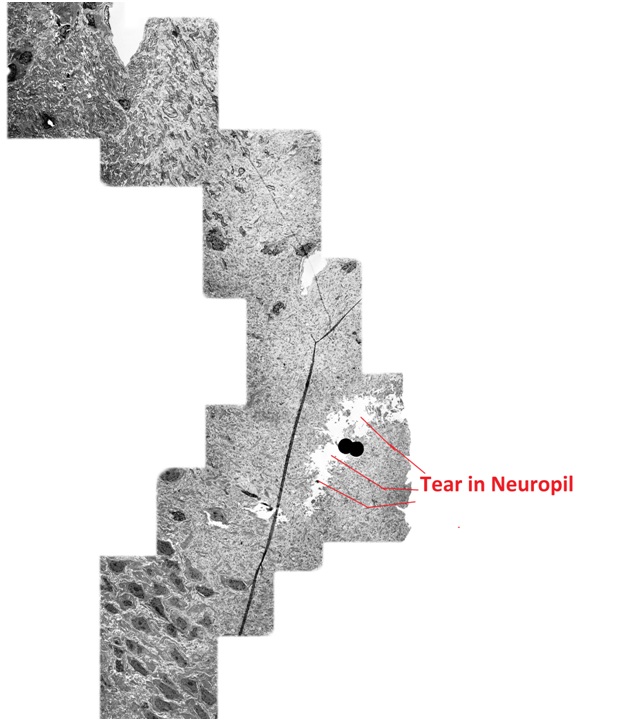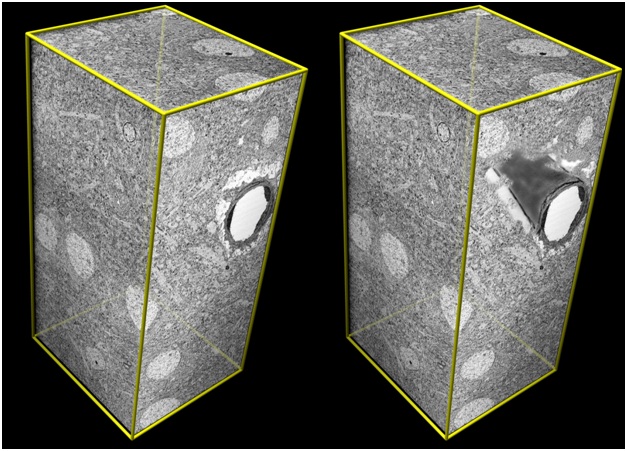By Mike Darwin
One of the things I hear from time to time is the assertion by some cryonicists that recent advances in mammalian brain vitrification technology have resulted in the brains of cryonics patients being “alive.” While the error is understandable, because under optimum laboratory conditions many, if not most of the cells in such brains may be viable – recoverable as metabolically active and self sustaining following cryopreservation, that does not equate to brain viability.
Semantics are very important here. “Viably” vitrified brain tissue is not alive, nor is it dead. Rather, it is in a thirds state, that of (true) suspended animation. And it is important to point out that there are a number of different kinds of suspended animation:
crypto- or anhydro-biosis, wherein living systems are rendered into a preserved, inanimate state by dehydration,
ambient temperature vitrification, wherein living systems are solidified and molecularly immobilized by substitution of their water content with an amorphous solid, such as amber,
and estivation, wherein the living system is rendered metabolically quiescent in the liquid state at ambient temperature by the inhibition or inactivation of biochemical metabolism.
The brains of cryonics patients, even if treated under ideal laboratory conditions, are neither alive nor in suspended animation. This is so because they are critically injured in at least these ways:
1) They have large peri-capillary tears and tears in the brain parenchyma/neuropil (tissue) on the microscopic level, ranging in size from a few, to perhaps 10 to 30 microns, scattered throughout the whole of the organ at (perhaps) distance intervals of tens to hundreds of microns. You can see both of these phenomena in the transmission electron micrographs (TEMs) of (optimally) vitrified rabbit brain below:
Figure 1: At left, above, is vitrified rabbit cerebral cortex showing an intact capillary properly attached to the brain parenchyma (neuropil) next to a micrograph of a brain capillary where the basement membrane has torn away from the surrounding neuropil. These peri-capillary tears are thought to result from dehydration induced by the cryoprotectant agents, not from cooling to vitrification temperature. [Micrograph courtesy of Dr. Gregory Fahy.]
Figure 2: Above, a tear in the neuropil of a vitrified rabbit brain extending perhaps ~30 to 40 microns across. [Micrograph courtesy of Dr. Gregory Fahy.]
It should be kept in mind that these images are 2-dimensional, and thus cannot show the depth of such lesions. To do that, it would be necessary to make serial sections and micrographs of the tissue and perform 3-D reconstruction of the image. If that were done, you might well see something like the Photoshopped image I’ve created below:
Figure 3: Photoshopped image of a 3-D reconstruction of brain tissue with a peri-capillary tear shown to extend many microns along the length of the capillary.
There is also damage to the molecular structure of some proteins and to the lipid membranes of the cells and the organelles they contain. While these injuries do not render all of the cells in the brain “non-viable” (e.g., unable to recover metabolism upon rewarming), they do render the brain “nonviable” in terms of being able to resume integrated, long term function. Such injuries are “lethal” because they are currently irreversible.
Thus, we have a fourth state: preserved and potentially recoverable.
So, to recap, there are at least four possible states that biological systems can be in:
Alive: functioning and metabolically active.
Dead: Irreversibly non-functional with loss of the necessary structural and/or contextual information required to permit restoration to life.
Suspended Animation: in a state of indefinite and complete biochemical and metabolic arrest, but fully intact and capable of resuming life if the process is reversed.
Potentially Recoverable: damaged to such an extent that external repair will be necessary before life can be restored; such repair may, or may not be possible as a function of technological advance, but in any event, the damage is of a nature or extent that extant biotechnology is incapable of reversing it. Cryonics falls into this fourth category.
It is both misleading and incorrect to equate a (currently) vitrified brain with being alive. It is fair to say that optimally vitrified brains have many viable cells, but that is also true of most cryonics patients frozen under reasonably good conditions.
That having been said, it is very important to point out that vitrified rabbit brains demonstrate far less damage than do frozen brains – in fact, virtually no injury from ice at all. It is also fair to note that vitrified brain slices have been shown to retain long term potentiation, which is a key step in memory formation.
The problem with these arguments is that they are sophisticated, require complex explanations and qualifications, and also require a sophisticated mind to understand them. It would be far easier to just declare that “the brains of vitrified cryonics patients are alive.” Unfortunately, we haven’t earned the right to do that. And perhaps more importantly, such a success is neither vital to the cryonics argument, nor is it ultimately germane, because, by definition, everyone who is placed into cryopreservation is not, and will never be, currently recoverable, because if we could heal them, we wouldn’t need to cryopreserve them in the first place. All cryonics patients, now and forever, face the fundamental uncertainty of whether they can be returned to life (cured). Suspended Animation will make that uncertainty much less daunting, but it will never eliminate it.





Nearly 100% of society, including scientists, don’t grasp (or choose to disregard) that death is not binary. We can’t even get past that! If you insist that I quit referring to our patients as alive, then would it be acceptable to you if I refer to them as not dead? It’s a bit awkward to use “not dead” all the time, especially since any listener will just translate that internally as “alive”. But it does seem like a good habit to get into in order to be more accurate in situations where accuracy is important.
You guys might find this thread interesting: http://www.geripal.org/2012/05/mostly-dead-vs-completely-dead.html.
I’m with MD. It doesn’t matter what’s convenient. We must present our best estimate of the truth.
A history of “cryonics language” would be informative, as it accompanies our history to embed cryonics into a lively and useful intellectual framework. I noted that in the late 1980′s and early 1990′s we cryonicists struggled to develop a language that was both truthful and conveyed philosophical and practical intentions, wherefore words such as ‘suspension’, ‘patient’, ‘biostasis’ were debated as to utility and accuracy. With transhumanism, nanotechnologism, and other technoenthusiasms that were appended to the critical effort of cryonics, the language debate moved into these areas and the real need to establish our own semantic foothold and territory was ceded to the excitement and novelty of these other ideas.
This was brought home to me in a jolt, where at a recent Transhumanist conference, a long term cryonicist and I met, with his saying “I haven’t seen you since Thomas passed away”. I appreciate that our activities in cryonics for some is delicate and even anonymous, but I revolted at this phrase to the core of my being, and corrected this friend by saying “entered cryonic suspension”. But it got me to thinking about OUR language, and that his uncorrected statement was another victory for death.
The word “cryonics” encompasses both the critical care medical procedures used to stabilize and cool our patients, and the maintenance of a physically and financially stable environment of the patient. The language of radical life extension is in its infancy, and the generation and analysis of all useful expressions will serve to enhance our thinking.
Tanya Jones published online a case report of a suspension where she wrote that the cryonicist “passed away.” I drew attention to that and asked if that represented Alcor’s official view of the people in its care. She then changed the wording to “went into cardiac arrest” or something to that effect.